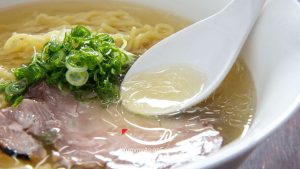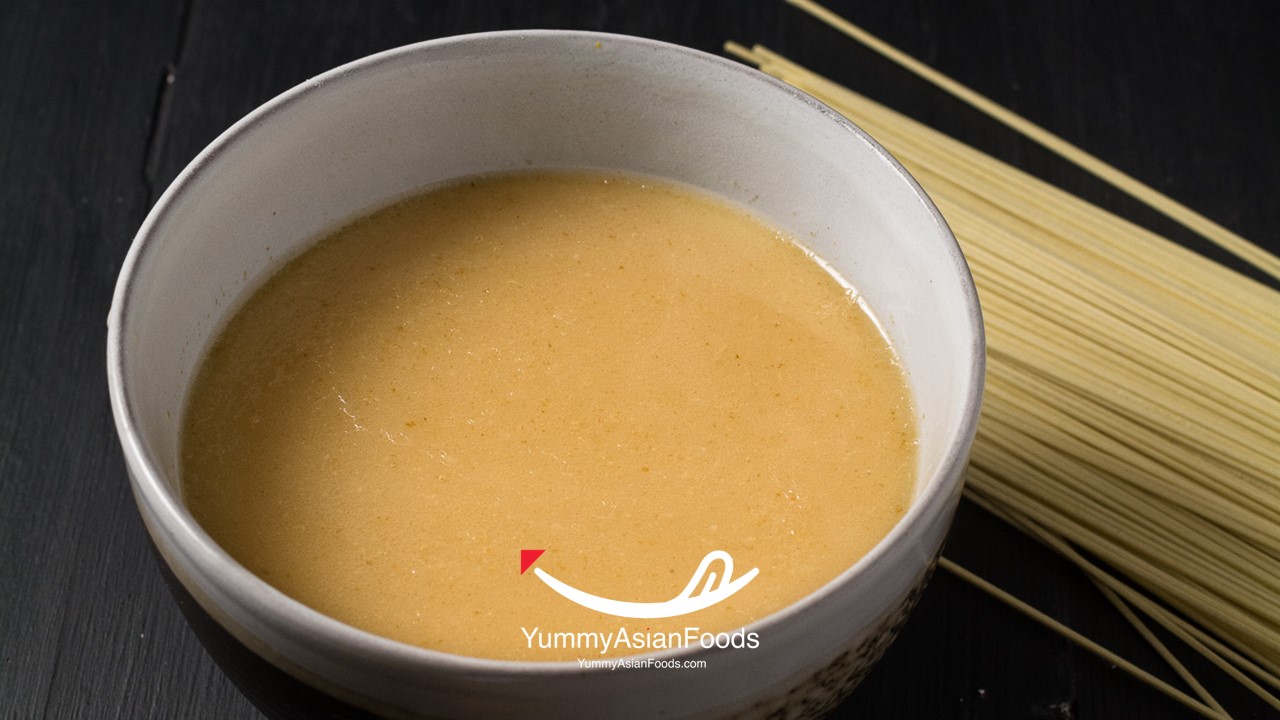Table of Contents
ToggleRamen broth is a fundamental element in the diverse world of ramen, a beloved dish that has captured the hearts and palates of people around the globe. This iconic Japanese noodle soup has gained immense popularity not only for its comforting and flavorful appeal but also for its cultural significance in Japanese cuisine. With its origins dating back to the early 20th century, ramen has evolved into a culinary phenomenon, with endless variations and regional specialties that showcase the artistry and creativity of its makers.
The importance of ramen broth cannot be overstated, as it is the foundational element that imparts the distinct flavors and character of each bowl of ramen. The broth, often simmered for hours or even days, is crafted with precision and care to achieve a harmonious balance of savory, umami, and aromatic notes. Whether it’s the rich and creamy tonkotsu broth, the clear and delicate shoyu broth, or the complex and robust miso broth, the diversity of ramen broths reflects the depth of Japanese culinary tradition and the dedication to creating a truly exceptional dining experience.
1. Shoyu (Soy Sauce 醤油ラーメン) Ramen Broth
Ramen broth is known for its rich and savory flavor; shoyu (soy sauce) broth is no exception. The unmistakable salty umami taste of shoyu broth comes from the traditional use of soy sauce, which adds depth and complexity to the broth. The soy sauce infuses the broth with a robust flavor that is both satisfying and comforting, making it a popular choice for ramen enthusiasts.
In addition to soy sauce, shoyu broth often includes mirin, a sweet rice wine that balances out the saltiness of the soy sauce and adds a subtle sweetness to the broth. These traditional ingredients work in harmony to create a flavorful base for ramen broth that complements the other components of the dish. Together, the soy sauce and mirin contribute to the distinct character of shoyu broth, making it a beloved and essential element in the ramen world.

How to Make Shoyu Ramen Broth
To make a rich and flavorful Shoyu Ramen broth, start by simmering chicken bones, pork bones, and kombu over low heat for at least 6 hours. This slow cooking process allows the flavors to develop and infuse into the broth. Next, add aromatics such as garlic, ginger, and green onions to enhance the depth of flavor. For an extra umami kick, incorporate soy sauce and mirin towards the end of the cooking process.
After simmering, one key tip to elevate your Shoyu Ramen broth is to strain it through a fine mesh sieve or cheesecloth. This step ensures a clear and smooth broth free from any impurities. Additionally, skimming off excess fat that rises to the surface during cooking will produce a cleaner taste. Finally, don’t forget to season your broth with salt or soy sauce according to your taste preferences before serving it with your favorite toppings, such as sliced chashu pork, bamboo shoots, nori seaweed, and soft-boiled eggs.
2. Tonkotsu (Pork Bone 豚骨ラーメン) Ramen Broth
Ramen broth, specifically the tonkotsu (pork bone) variety, is renowned for its creamy and hearty nature. The lengthy cooking process of making tonkotsu ramen broth is essential to achieving its rich and complex flavors. Pork bones are simmered for hours on end, releasing their collagen and imparting a luscious, velvety texture to the broth. Alongside the pork bones, aromatics like garlic, ginger, and green onions are added to infuse the broth with layers of savory depth.
The result of this meticulous process is a ramen broth that is deeply flavorful and satisfying, with a luxurious mouthfeel that coats the palate. Each spoonful of tonkotsu ramen broth embodies the dedication and time-honored tradition that go into its creation, making it a cornerstone of the beloved Japanese noodle dish.

How to Make Tonkotsu Ramen Broth
To make a rich and flavorful Tonkotsu Ramen broth, it’s crucial to start with high-quality pork bones. The key to achieving that creamy consistency lies in the slow simmering process, which can take anywhere from 12 to 24 hours. Adding aromatics like garlic, ginger, and green onions enhances the depth of flavor and helps balance out the richness of the broth.
A game-changing tip is to blanch the bones before simmering them—this step helps remove impurities and ensures a cleaner taste in the final product. Don’t forget to skim off any scum that rises to the surface during cooking; this extra step will result in a clearer and more visually appealing broth. Experimenting with different proportions of bones and water can also help you customize the intensity of your Tonkotsu broth according to your preference.
3. Miso (味噌ラーメン) Ramen Broth
Ramen broth, like miso, is a flavorful and slightly sweet base that adds depth and richness to the beloved Japanese noodle soup. Do you remember the Naruto anime series? Naruto Uzumaki loves miso chasu ramen. The savory taste of miso broth comes from the fermentation process used to create miso, a traditional Japanese seasoning made from soybeans, salt, and koji (a type of mold). During fermentation, the natural enzymes in koji break down the proteins and carbohydrates in the soybeans, resulting in a complex and umami-rich flavor profile. This fermentation process gives miso broth its unique and satisfying taste, making it an essential component of a delicious bowl of ramen.
The fermentation process plays a crucial role in creating the distinct flavor of miso broth, which is essential in giving ramen its signature taste. As the soybeans and koji undergo fermentation, they develop a rich, savory depth that infuses the broth with a complex umami flavor. This fermentation process takes several months to develop, allowing the flavors to mature and deepen, resulting in a broth that is both comforting and full of character. The unique taste of miso broth elevates the overall experience of enjoying a steaming bowl of ramen, making it a key element in the culinary art of crafting a satisfying and delicious bowl of noodles.

How to Make Miso Ramen Broth
To start making miso ramen broth, gather your ingredients: dried shiitake mushrooms, kombu seaweed, bonito flakes, and water. Soak the mushrooms and kombu in water for at least 30 minutes to infuse flavor. Once soaked, bring the mixture to a gentle simmer and add bonito flakes for depth. Strain the broth carefully before adding miso paste for that signature umami flavor.
For a twist on traditional miso ramen broth, consider adding ginger or garlic for an extra layer of complexity. Experiment with different types of miso paste – white or red – to find your favorite balance of sweetness and saltiness. Finally, don’t be afraid to get creative with toppings such as soft-boiled eggs, sliced green onions, or roasted pork belly. Play around with different combinations until you discover the perfect bowl of homemade miso ramen that suits your taste buds.
4. Shio (Salt 塩ラーメン) Ramen Broth
Ramen broth is often celebrated for its delicate and light flavor profile, and shio broth is no exception. The simplicity of the ingredients used in making shio ramen broth, primarily salt and kombu, allows the natural flavors of the broth to shine through. Combining these basic ingredients creates a savory and refreshing broth, making it a popular choice for those seeking a more subtle and nuanced flavor in their ramen.
The lightness of shio ramen broth results from the minimalistic approach to its ingredients, with salt and kombu being the primary components. This simplicity allows the natural flavors of the broth to take center stage, resulting in a delicate and nuanced flavor profile that is highly sought after by ramen enthusiasts. The use of these basic ingredients in shio ramen broth exemplifies the elegance of Japanese culinary traditions, where the focus on quality and simplicity creates a truly exceptional dining experience.

How to Make Shio Ramen Broth
To make a delicious Shio ramen broth, start by simmering a combination of chicken and pork bones for several hours. Adding aromatics like onion, garlic, ginger, and kombu will enhance the flavor profile of the broth. Skimming off any impurities that rise to the surface during the simmering process is important to achieve a clear and clean broth.
After simmering for hours, season the broth with sea salt to bring out the savory umami flavors. Adjust the salt level slowly, tasting as you go, to ensure you achieve the perfect balance of flavors. For an extra depth of taste, consider adding a splash of soy sauce or mirin towards the end of cooking. Remember that making Shio ramen broth is an art; don’t be afraid to experiment with different ingredients and techniques to create your own signature flavor profile.
Final Slurp: 4 Ramen Broth Types
Ramen broth comes in various types, each offering distinct flavors that cater to different preferences. From the rich and creamy tonkotsu broth to the savory and complex shoyu broth, there’s a wide range of options to explore. Whether you prefer the light and refreshing shio broth or the umami-packed miso broth, there’s a ramen broth out there waiting for you to discover your favorite flavor profile. So, go ahead and embark on a delightful journey through the world of ramen broths to find the one that suits your taste buds best.













